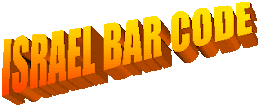There are many industries where publication of your own work is a critical part of your career development. As professionals in industries that require us to actively publish research studies, essays, articles, textbooks, etc. we have to find ways to account for such publications on our resumes. There are a number of things to consider in respect to publications as you develop your resume.
First, ask yourself how relevant the publications are to your career objective. If you have recent publications that support your career objective, make sure to create a separate heading on your resume and list the publications in reverse chronological order. Follow the AP style when listing your publication, omitting your name from the listing if you were the only author of the text, as that is implied. Do not list publications that do not support your career objective on your resume; while they may be helpful to mention to your potential employer via a cover letter, it is not necessary to take up space on your resume with information that is not directly impacting to your career. If you have submission in progress, or are working on texts that you know will be published at the later time, and they support your qualifications for the job, include them on the resume under a sub-heading of “submitted to (publication name)” or “to be published in (publication name)”. However, if you decide to include works in progress, be certain that they will get published at some point in the future. This is mostly critical for freelance magazine, newspaper or creative writers; do not list every article you have submitted for publication, unless you are certain that it will get published.
If your list of publication is fairly extensive, do not dismiss it completely from your resume. You want your employer to know that you have either published or are in the process of publishing your work. You should create a section within your resume dedicated to publications. Don’t go overboard with the number of publications you list on your resume. List three to five publications, in reverse chronological order in this section. This will give your employer an idea of your work, the publications and audiences you have reached. At the end of your publication listing, include a statement that tells the employer a complete listing of publications can be provided upon request. In your professional summary, or cover letter, you can indicate the total number of publications you’ve had in your career. Create a separate document that includes a complete listing of your publications, following the ASP style. You should make sure that the list of your publication credits other authors properly, as well. You should have a print out of this list, along with your resume that you can bring to any job interview, or forward to the hiring manager at their request. In addition, if asked about your publications, offer your potential employer a copy of any of your articles for their review (although if given the appropriate reference information, your employer, if interested, will be able to locate your publications on their own).
Overall, disclose any information about publications if it supports your career objective and highlights your qualifications for the job. Review the information you list carefully and make sure that names and dates of publications are correct – even minor mistakes can raise questions about your credibility.
First, ask yourself how relevant the publications are to your career objective. If you have recent publications that support your career objective, make sure to create a separate heading on your resume and list the publications in reverse chronological order. Follow the AP style when listing your publication, omitting your name from the listing if you were the only author of the text, as that is implied. Do not list publications that do not support your career objective on your resume; while they may be helpful to mention to your potential employer via a cover letter, it is not necessary to take up space on your resume with information that is not directly impacting to your career. If you have submission in progress, or are working on texts that you know will be published at the later time, and they support your qualifications for the job, include them on the resume under a sub-heading of “submitted to (publication name)” or “to be published in (publication name)”. However, if you decide to include works in progress, be certain that they will get published at some point in the future. This is mostly critical for freelance magazine, newspaper or creative writers; do not list every article you have submitted for publication, unless you are certain that it will get published.
If your list of publication is fairly extensive, do not dismiss it completely from your resume. You want your employer to know that you have either published or are in the process of publishing your work. You should create a section within your resume dedicated to publications. Don’t go overboard with the number of publications you list on your resume. List three to five publications, in reverse chronological order in this section. This will give your employer an idea of your work, the publications and audiences you have reached. At the end of your publication listing, include a statement that tells the employer a complete listing of publications can be provided upon request. In your professional summary, or cover letter, you can indicate the total number of publications you’ve had in your career. Create a separate document that includes a complete listing of your publications, following the ASP style. You should make sure that the list of your publication credits other authors properly, as well. You should have a print out of this list, along with your resume that you can bring to any job interview, or forward to the hiring manager at their request. In addition, if asked about your publications, offer your potential employer a copy of any of your articles for their review (although if given the appropriate reference information, your employer, if interested, will be able to locate your publications on their own).
Overall, disclose any information about publications if it supports your career objective and highlights your qualifications for the job. Review the information you list carefully and make sure that names and dates of publications are correct – even minor mistakes can raise questions about your credibility.



No comments:
Post a Comment